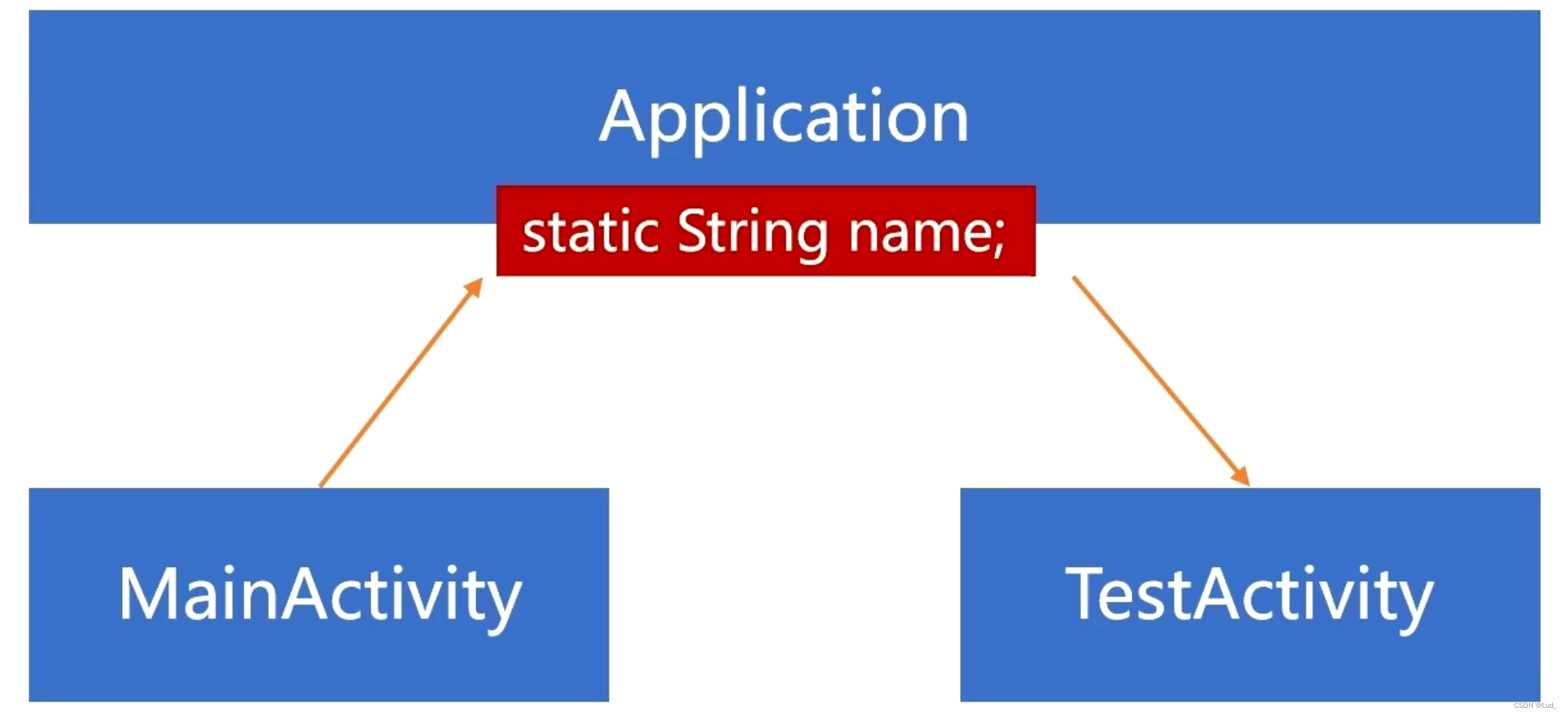Application 的作用
- Application 是系统组件,生命周期很长,进程在他就在,所以可以在 Application 中维护一些全局变量(但是建议用单例来做)。
- 应用进程启动之后做一些初始化操作。因为 Application 生命周期长,生成对象早。
- 提供上下文:也不会有内存泄漏
Application 是根据进程走的,有几个进程就有几个 Application 所以多进程开发时需要根据进程来处理好初始化的内容。
Application 的继承类关系以及生命周期
public class Application extends ContextWrapper implements ComponentCallbacks2 {
}
public class ContextWrapper extends Context {
Context mBase;
public ContextWrapper(Context base) {
mBase = base;
}
protected void attachBaseContext(Context base) {
if (mBase != null) {
throw new IllegalStateException("Base context already set");
}
mBase = base;
}
public Context getBaseContext() {
return mBase;
}
}
Application 继承自 Context 的包装类 ContextWrapper,ContextWrapper又继承自 Context,所以 Application 可以当作一个 Context 来用。Application 所有的调用最后都交给了 ContextWrapper 的 mBase 来处理,这就是一个静态代理
- Application 生命周期
构造函数 —> attachBaseContext(base: Context) —> onCreate() — > onTerminate()(onTerminate一般不生效,打断点也不走)。
深入理解 Application 的初始化原理
- 应用进程启动后的入口函数在 ActivityThread 的 main() 函数
public static void main(String[] args) {
Looper.prepareMainLooper();
ActivityThread thread = new ActivityThread();
thread.attach(false, startSeq);
if (sMainThreadHandler == null) {
sMainThreadHandler = thread.getHandler();
}
Looper.loop();
}
入口函数一个是准备主线程 looper 一个是通过 ActivityThread 像 AMS 发消息。thread.attach方法如下:
private void attach(boolean system, long startSeq) {
// 获取了 AMS 的 binder 对象
final IActivityManager mgr = ActivityManager.getService();
try {
mgr.attachApplication(mAppThread, startSeq);
} catch (RemoteException ex) {
throw ex.rethrowFromSystemServer();
}
}
调用了 AMS 的 attachApplication() 函数
@Override
public final void attachApplication(IApplicationThread thread, long startSeq) {
// synchronized 是因为当前是跑在 binder 线程里面
synchronized (this) {
int callingPid = Binder.getCallingPid();
final int callingUid = Binder.getCallingUid();
final long origId = Binder.clearCallingIdentity();
attachApplicationLocked(thread, callingPid, callingUid, startSeq);
Binder.restoreCallingIdentity(origId);
}
}
- attachApplicationLocked()
// 参数。IApplicationThread 是应用端发过来的 binder 对象
private final boolean attachApplicationLocked(IApplicationThread thread,
int pid, int callingUid, long startSeq) {
// 里面代码很多 主要代码如下
// bindApplication 是一个 IPC 操作,会调用到应用进程 的 bindApplication()
thread.bindApplication(...)
}
- ActivityThread 的 bindApplication()
// 把所有的参数都封装到 AppBindData 中
AppBindData data = new AppBindData();
// 。。。
// 封装成消息 发送到应用主线程中
sendMessage(H.BIND_APPLICATION, data);
public void handleMessage(Message msg) {
if (DEBUG_MESSAGES) Slog.v(TAG, ">>> handling: " + codeToString(msg.what));
switch (msg.what) {
case BIND_APPLICATION:
// 获取 data 后,创建了 handleBindApplication() 传入了 data
AppBindData data = (AppBindData)msg.obj;
handleBindApplication(data);
Trace.traceEnd(Trace.TRACE_TAG_ACTIVITY_MANAGER);
break;
- 调用了 handleBindApplication(data); 方法
private void handleBindApplication(AppBindData data) {
// 获取 data.info 描述应用安装包信息的对象 data.info 就是 LoadedApk
data.info = getPackageInfoNoCheck(data.appInfo, data.compatInfo);
//。。。
Application app;
// 通过 makeApplication 方法创建 Application 对象
app = data.info.makeApplication(data.restrictedBackupMode, null);
// 。。。
// 调用 Application 的 onCreate() 函数
mInstrumentation.callApplicationOnCreate(app);
}
makeApplication() 是怎么创建 application 对象的
public Application makeApplication(boolean forceDefaultAppClass,Instrumentation instrumentation) {
if (mApplication != null) {
return mApplication;
}
final java.lang.ClassLoader cl = getClassLoader();
// 为 Application 创建一个 Context
ContextImpl appContext = ContextImpl.createAppContext(mActivityThread, this);
// 为 Application 创建对象 传入了 appContext;所以 Application 的 Context 的实现类是 ContextImpl
app = mActivityThread.mInstrumentation.newApplication(cl, appClass, appContext);
return app;
}
newApplication() 方法
public Application newApplication(ClassLoader cl, String className, Context context)
throws InstantiationException, IllegalAccessException,
ClassNotFoundException {
// 通过工厂创建
Application app = getFactory(context.getPackageName())
.instantiateApplication(cl, className);
// 调用 attch 里面会把 Context 赋值给 mBase ;attach 会调用 attachBaseContext()
app.attach(context);
return app;
}
applocation 的上下文对象是在 app.attach 之后才赋值的,所以在构造函数中无法获取到 applocation 的上下文对象,所以需要上下文对象获取的组件就都获取不到,比如 gerResource() 等。
- instantiateApplication()
public @NonNull Application instantiateApplication(@NonNull ClassLoader cl,
@NonNull String className)
throws InstantiationException, IllegalAccessException, ClassNotFoundException {
// 通过 ClassLoader 创建 Application 对象;所以 Application 的构造器中不能有参数
return (Application) cl.loadClass(className).newInstance();
}
总结和注意
-
application 的流程:new Application() --> application.attachBaseContext() —> application.onCreate()
-
在 attachBaseContext() 之前是无法获取上下文对象的,比如如果你在构造器中获取 resource 等是获取不到的。
-
不要执行耗时操作:bindApplication() 是在主线程回调生命周期的,不仅影响项目启动速度,还有影响项目应用各种组件的启动速度。
-
在 Application 中使用静态变量的问题

假设 Application 中有一个静态变量,name 是在 MainActivity 赋值的,赋值后跳转到 TestActivity,然后切换到后台,加入应用此时因为内粗问题被回收了,再次打开应用是会重建 Application 然后再恢复 TestActivity 此时 name 是null的。